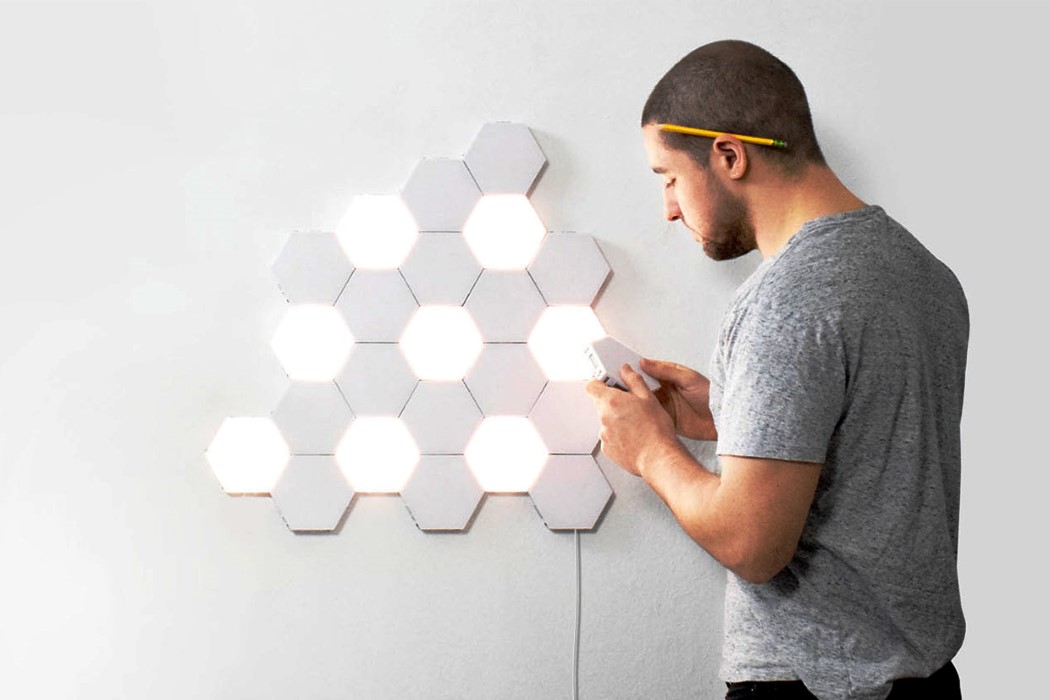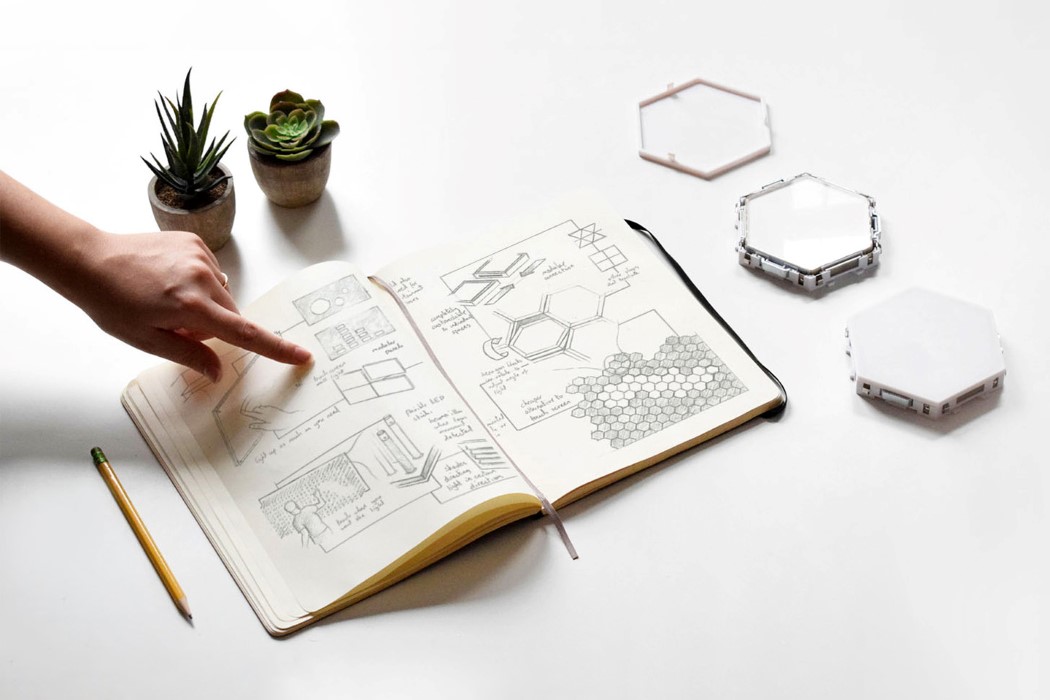Lessons design school didn’t teach me – Entrepreneurship and how to protect your creative work - Yanko Design
As designers, we often care near near creating the all-time possible product and can be guilty of tunnel vision during the design process. However, I learned the hard style that it is critical for designers to take a basic understanding of the mechanisms that surround and back up product design to ensure our creative efforts and the businesses built effectually them are protected. It isn't just nigh designing something, it's nearly safeguarding what y'all design too.
Protect yourself and your work! (Intellectual property)
Intellectual property was something I didn't understand or have time for until it was too late. A modular lighting unit I designed during my graduation thesis presently went on to become a successful commercial production (I eventually developed my ain company around information technology too), but it wasn't long before the net was just flooded with cheap copycats. They were essentially the aforementioned design with cheaper components, less reliable associates, and a heavily undercut toll tag. Non simply did it injure the business organisation, but information technology ended up hurting the brand I built too. Without IP protection, designers lose leverage with the business or person we are partnering with. Having the right protection in place is extremely helpful when negotiating a bargain and having a certain corporeality of control over what happens to our work.
More importantly, IP protection prevents other companies from copying and selling our work. It has been tough to see how ruthless some of the overseas markets can exist when it comes to plagiarism. Unfortunately, the more successful my designs were, the more appealing a target my work became. I've seen tertiary parties literally just copy and paste unabridged websites – the images, the copy, the product, company mission, etc.
At times it often felt like everybody was profiting from my hard piece of work, except me. And one time information technology starts, it's extremely difficult to stop since most of these companies are based overseas and do not have any contact information available. Usually, the best course of action to gainsay this is to contact the actual platform they are using, Shopify, Amazon, Instagram, etc. The best fashion to slow their growth is to target where they're growing.
Similar myself, I'yard certain many young designers are financially limited when starting out, so the process of getting a patent can be quite daunting. Everyone's situation can be unique and then please seek professional advice merely I would suggest at minimum to file a 'provisional patent'. You lot may be able to do this without a lawyer depending on the complexity of your pattern and it is the cheapest and easiest manner to get you off to the races. A provisional patent will essentially put your blueprint protection in a queue and requite you priority. And you don't need to exist completely specific when filing at this signal. It will have effectually a year to clear, later which y'all can decide if you want to spend a little more coin on writing it properly and filing it officially. While it's processing yous tin use the term 'patent-pending' as a grade of protection. Here are a few ways of protecting your work.
• Utility patent – Used to protect new technologies and concepts.
• Design patent – Used to protect the aesthetic of your product.
• Copyright – Used to protect original works of authorship like images, music, copy etc. (This is automatic)

Read the fine print! (Contract and business law)
Every designer should accept an agreement of what a fair deal is! Information technology sounds basic but information technology'due south not something nigh designers are familiar with. Simply 'getting exposure' for creating the majority of a company'due south assets is not good plenty. It is difficult to understand how certain contract structures will play out until you have lived through them. However, I would advise designers to take a crash course on standard deals betwixt designers/inventors and businesses.
One of my first mistakes out of schoolhouse was signing a deal for a share of 'net profits'. Information technology sounded off-white to me until I learned that 'cyberspace profits' isn't a articulate-cut figure, and tin quite easily be manipulated. If you do sign a deal for a share of profits/revenue, then at least know that you have the right to accept visibility and transparency from the company on their numbers (Quarterly profit/loss statements).
I would advise that earlier getting into negotiations y'all make sure you take a articulate idea of what y'all want the outcome to be. Would you like a 1-time payment for your concept and head off into the sunset or do you desire to be a part of the journeying and help build the concern? There's no written formula for which route to have, but it'southward a gut conclusion ability that you'll develop with time and feel.

Programme for all contingencies (Good also as Bad)
This is probably a lesson that is very familiar in the startup world but you lot need to make certain y'all have the tough conversations correct at the outset instead of operating on dreams and lofty assumptions. Although it may be an uncomfortable process, merely if you're looking to exist an entrepreneur and starting a business venture with a new partner yous need to brand certain you lot are very clear upfront regarding responsibilities and compensation. Inquire yourself "What happens if this business organisation/production makes $i,000,000?" "What is our company mission?" "What happens if we accumulate a big corporeality of debt?" "Do we accept a procedure in place if we disagree?" "What happens if someone is not fulfilling their duties?" etc.
When starting out, anybody is probably very conscious of maintaining a positive mentality. But don't be agape to talk through all of the different potential road bumps or outcomes with your partner. Focusing on building a successful business organization outset and and then worrying about it later is a error and a difficult (and very expensive) lesson I learned the hard way. You do not want to invest your time and money until you have made the terms extremely clear upfront and have these agreements dated and signed!

You can do information technology too! (Having confidence in your abilities)
Even later receiving significant recognition and multiple awards coming out of university, I notwithstanding didn't really have full confidence in myself and my abilities. I would love for someone reading this who is thinking near starting their own business or pattern studio to have the confidence to go for it! I may exist a fiddling biased simply I believe the design and creative-ability of a business is really the secret sauce. I think the importance of practiced design and proficient branding is becoming more and more meaning every bit time goes on and markets saturate.
There is no better feeling than seeing something that was previously just a thought in your mind materialize into the real globe then see customers interact with it in a positive manner. The journey is long, and you will need some perseverance, optimism, and a clever strategy forth the way, because at that place will ever be pitfalls and competitors jealous of your success. Have patience and realize success doesn't happen overnight – existence successful is, in fact, a journey, not a goal… and it'south all in constantly looking at the road ahead, and how yous deal with the challenges that come up your fashion!

Virtually THE AUTHOR
James Vanderpant is an honour winning industrial designer and inventor of the world's first modular, touch sensitive lighting system. He graduated from Brighton Academy, England in 2022 where he founded Brighton's biggest production pattern exhibition. He is now running Polygon, a designed focused company in NYC (polygonlight.com) and is also working on the adjacent bathroom revolution. Also this he also runs a YouTube channel – making artistic and blueprint centered videos.
Source: https://www.yankodesign.com/2020/08/16/lessons-design-school-didnt-teach-me-entrepreneurship-and-how-to-protect-your-creative-work/
0 Response to "Lessons design school didn’t teach me – Entrepreneurship and how to protect your creative work - Yanko Design"
Enregistrer un commentaire